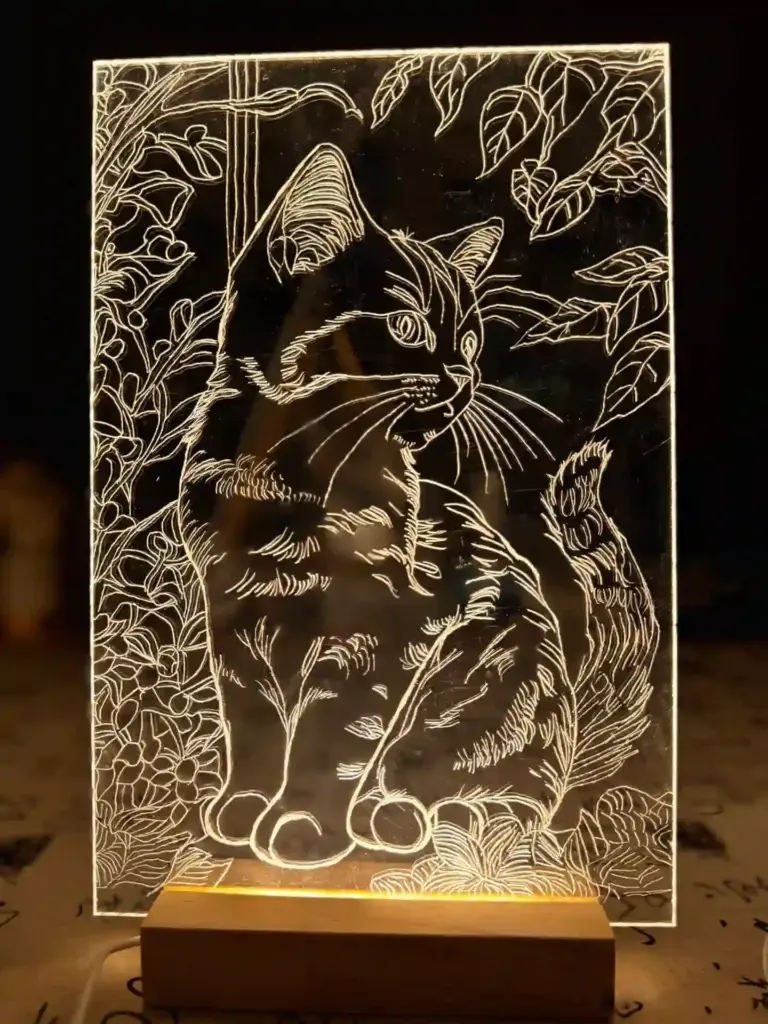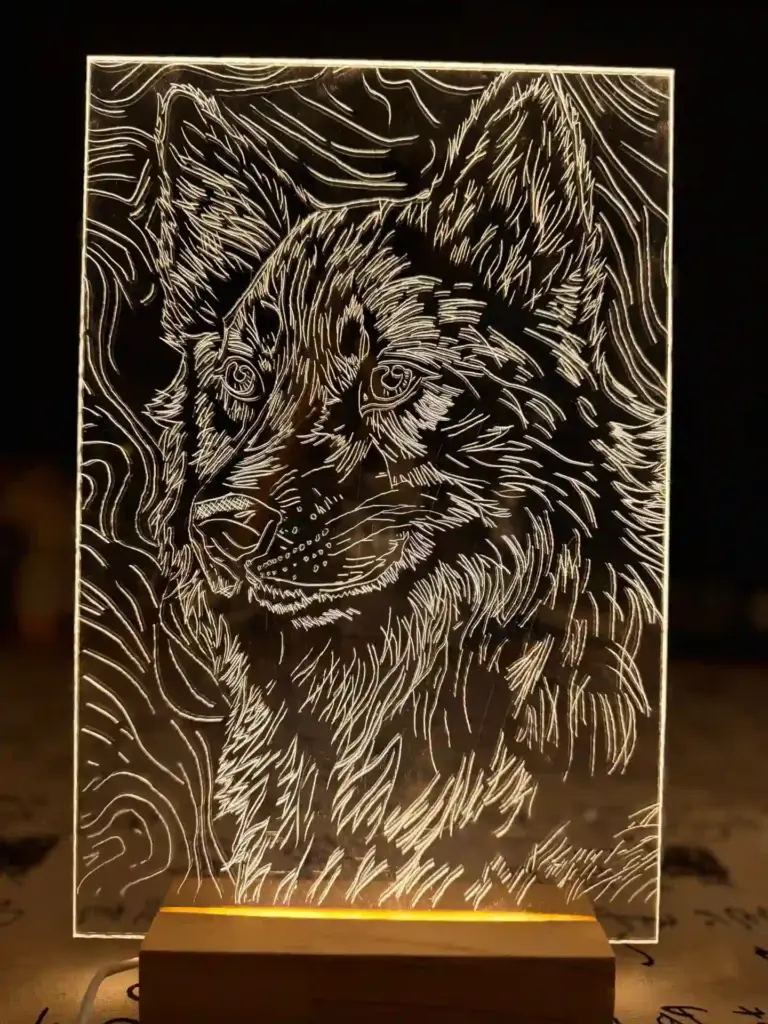These Glowing Engraved Panels Show the Possibilities of Clear Acrylic Sheets
Are you looking at a painting? A lamp? Or a surprising use of a common material?
The glowing artworks shown below might look like decorative light pieces, but they’re actually made from a widely used yet often overlooked material — clear acrylic sheet.
Case Study: LED Engraved Art Panels Made with Acrylic Sheets

This finely detailed cat-themed panel was created by laser-engraving the artwork into a sheet of clear acrylic. When light from the LED base shines through the panel, the engraved lines glow and bring the image to life.

This dog portrait uses the same method. The glowing lines aren’t painted or printed — they’re formed by controlled scratches on the surface that catch the light from below. All it takes is a clear sheet, a laser engraver, and a small LED base.
You’ll often see projects like these in home decor, gift design, creative workshops, and small-batch art production. And behind each one is a simple, clear acrylic sheet.
What Is Clear Acrylic Sheet?
Clear acrylic sheet is a type of thermoplastic known chemically as PMMA (polymethyl methacrylate), often called “plexiglass” or “acrylic glass.” It offers the transparency of glass with better strength, lower weight, and much easier processing.
Key features include:
- High clarity, with light transmittance up to 92%
- Lightweight, about half the weight of glass
- Shatter-resistant and safer to handle
- Easy to machine, suitable for laser cutting, drilling, polishing, and bending
- Durable surface, with good scratch resistance and long service life

Why Is Acrylic Sheet Ideal for Light-Based Engraving?
Clear acrylic is excellent at transmitting and directing light. When engraved with a laser or cutting tool, the etched areas disrupt the light path and glow brightly when lit from the side or base.
That’s why it’s commonly used in edge-lit signs, LED art panels, and architectural lighting — it combines transparency with the ability to highlight fine engraved detail through internal lighting.
Other Common Uses for Clear Acrylic Sheets
- Interior design: desk mats, wall panels, dividers
- Advertising displays: lightboxes, signboards, menu holders
- Educational tools: writing boards, school craft materials
- Industrial applications: instrument covers, machine guards
- Creative products: photo frames, custom keychains, art plaques
Standard Specifications
| Category | Description |
| Thickness | 2mm, 3mm, 5mm, 8mm (others on request) |
| Sheet size | 1220 × 2440 mm (4 × 8 feet standard) |
| Finishes | Glossy, matte, frosted, mirrored |
| Processing | Laser cutting, engraving, bending, polishing |
Standard Specifications
Category
Description
Thickness
2mm, 3mm, 5mm, 8mm (others on request)
Sheet size
1220 × 2440 mm (4 × 8 feet standard)
Finishes
Glossy, matte, frosted, mirrored
Processing
Laser cutting, engraving, bending, polishing
Shared by alandsacrylic
These glowing animal-themed light panels are not made in fancy studios — they’re built from a simple but powerful material: clear acrylic sheet.
It’s light, clean, structurally stable, and incredibly versatile — a favorite among designers, manufacturers, makers, and hobbyists alike.
If you’re passionate about design, creativity, or visual expression, this is a material worth knowing.
If you’re sourcing materials for your next build, clear acrylic is a smart, proven place to start.
Frequently Asked Questions (FAQ)
Q1: What type of acrylic sheet is best for engraving with LED lighting?
A: Cast acrylic sheets are generally better for engraving than extruded ones. They produce cleaner, deeper engraving lines that catch and reflect LED light more effectively, making the final piece appear brighter and more defined.
Q2: What thickness of acrylic sheet should I use for light panels?
A: 3mm to 5mm thickness is ideal for most desktop-sized LED light panels. It’s thick enough to maintain structural stability while still allowing clean light transmission and easy engraving.
Q3: Can I paint or print on acrylic sheets after engraving?
A: Yes. After engraving, you can apply acrylic-compatible paint to highlight the lines or use UV printing for additional color layers. Just make sure the surface is clean and grease-free.


